FUNDING CUTS IMPACT CT HUMANITIES: Help CT Humanities navigate recent funding cuts and continue our vital work across Connecticut. All donations made to CTH will be matched dollar-for-dollar up to $50,000. Donate today!
Now Viewing:
Transportation

Middletown’s Arrawanna Bridge
Throughout much of the 20th century, the Arrawanna Bridge played a key role in Middletown’s transportation network, carrying traffic from Berlin Street to Newfield Street.
Read
Navigating Connecticut Safely: The Green Book’s Role in African American Travel
In the mid-20th century, during the era of Jim Crow, the Green Book helped African American travelers find safe restaurants, hotels, gas stations, and other businesses while on the road.
Read
“Girl Pilot”: Mary Goodrich Jenson Breaks Barriers in Aviation and Journalism
Blending her aviation and journalism careers, Wethersfield’s Mary Goodrich Jenson pushed the boundaries of both fields.
Read
Disaster on the Sound: The Collision of the Steamboats Stonington and Narragansett
The crash involving the S.S. Stonington and the S.S. Narragansett resulted in the death of dozens, massive destruction, and a media frenzy.
Read
A Revolution in Horse Power: The Hartford & Wethersfield Horse Railroad Goes Electric
In 1888, Hartford commuters and city-goers zipped down Wethersfield Avenue in a horseless trolley car for the first time.
Read
Turnpikes and Transportation in Sharon
The town of Sharon, like many early communities in the colony, required basic road and bridge infrastructure in order to maintain a thriving community.
Read
New London Harbor Lighthouse: Connecticut’s First Official Lighthouse
New London Harbor Lighthouse, originally opened in 1761 and rebuilt in 1801, is Connecticut’s oldest surviving and tallest lighthouse.
Read
“Appalling Calamity”: Loss of the Steamboat Lexington – Today in History: January 13, 1840
On January 13, 1840, over 150 people perished on Long Island Sound when the steamboat Lexington caught fire.
Read
Connecticut Turnpike Opens – Today in History: January 2
On January 2, 1958, Governor Abraham Ribicoff officially opened the Connecticut Turnpike—today the Governor John Davis Lodge Turnpike—to traffic.
Read
The Day Four Trains Collided in East Thompson
In 1891, Thompson, Connecticut, was the site of one of the most horrific railway accidents in American history.
Read
The “Welcoming Beacon” of Sheffield Island Lighthouse
Sheffield Island, is home to one of Connecticut’s historic lighthouses—a stone structure with a celebrated past dating back two hundred years.
Read
Bradley Field Enters the Jet Age
In 1952 a state-of-the-art terminal building, Murphy Terminal, was opened in the spirit of “if you build it, they will come.”
Read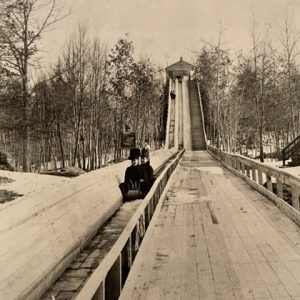
Trumbull’s Parlor Rock Park: A Premier Amusement Center of the Late 19th Century
In Trumbull, the arrival of the Housatonic Railroad brought a lesser known but more entertaining development—one of the country’s first amusement parks.
Read
Early Turnpikes Provided Solution to Lack of Reliable Roads
Although few of the privately managed toll-roads of the 1800s proved profitable for investors, state commerce benefited in the long run.
Read
A Busy Airfield in Bethany
In its first few years, the airfield in Bethany served the interests of small-time aviation enthusiasts.
Read
Moses Wheeler: Legendary Housatonic Ferryman
Moses Wheeler carried passengers across the Housatonic River as the operator of the first ferry from Stratford to Milford—over 350 years ago.
Read
Ferry Boats a Way of Life in Early Connecticut
From the 1600s on, Connecticut’s long coastline and river systems made ferry crossings a routine but sometime dangerous fact of life.
Read
A Hip Road Trip
Known as “Gasoline Alley” during the 1950s, the Berlin Turnpike boasts a heady visual mix of neon, brand names, logos, and 1960s’ motel Modernism.
Read
Albert Augustus Pope, Transportation Pioneer
Pope’s bicycles and automobiles not only gave 19th-century consumers greater personal mobility, they also helped propel social change.
Read
Frank Duryea Drives the First Automobile in Connecticut
In 1893, Frank Duryea, along with his brother, built one of the first cars in the country to have an internal combustion engine.
Read
Road Signs of the Air
In the 1920s, most pilots navigated using road maps and by following highways, rivers, and other landmarks that they could see from the air.
Read
Connecticut’s Naval Contributions to the Civil War
Companies across Connecticut helped keep the Union navy afloat while sea-savvy leaders and sailors from the state kept it in fighting form.
Read
A Night to Remember: When the Steamboat Took on the Railroad—and Lost
A case of mistaken identity causes a vessel to crash into a bridge and results in new a rule for marking safe passage with red lights.
Read
Charles Ritchel and the Dirigible
An entrepreneur’s design for a lighter-than-air vehicle takes flight in the late 1800s and inspires a new state industry.
Read
Town Patents the Lattice Truss Bridge – Today in History: January 28
On January 28, 1820, architect Ithiel Town was granted a patent for a wooden truss bridge, also known as Town’s Lattice Truss.
Read
Farmington Canal Designed to Give Connecticut Commerce a Competitive Edge
The Farmington Canal serves as an example of how developments in transportation played a pivotal role in facilitating the country’s industrial activity.
Read
Boston Post Road Carved out Three Travel Routes through State
The forerunners of Connecticut’s three interstate highways began as rugged postal routes in the 1600s.
Read
New Haven’s Long Wharf
From the 17th through the 19th centuries, the economic prosperity of New Haven significantly depended upon Long Wharf.
Read
Rising Tide: Steamboat Workers on the Connecticut River
For the deck hands, stevedores, and firemen who made the steamboats of the Hartford Line run, 18-hour days, dangerous conditions, and lousy food were the norm.
Read
Mighty, Mighty Hartford
In October of 1908, Hartford celebrated the opening of the Bulkeley Bridge, which connected Hartford and East Hartford, with a three-day extravaganza.
Read
Rails and Paper Trails
The railroad first came to Connecticut in August of 1832 when the New York, Providence & Boston Railroad broke ground in Stonington.
Read
Roosevelt Rides in an Electric Car – Today in History: August 22
On August 22, 1902, President Theodore Roosevelt rode through the streets of Hartford in an electric automobile.
Read
Connecticut Valley Railroad’s First Train – Today in History: July 29
On July 29, 1871, a ceremonial train ran along the new 44-mile track built by the Connecticut Valley Railroad.
Read
The Path to Ashford’s Progress
Ashford’s location between Boston and Hartford once made it an important center for travel and commerce.
Read
Bridgeport’s Catastrophic 1911 Train Wreck
In the early morning hours of July 11, 1911, a train derailed in Bridgeport, killing fourteen people. Among the first responders were members of the St. Louis Cardinals baseball team.
Read
Merritt Parkway Creates Scenic Gateway to New England
This Depression-era road improvement project sought to artfully balance the natural and built environments.
Read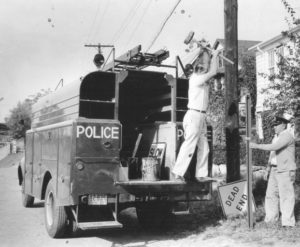
Greenwich Emergency Responders: On the Move Overtime
Horses, motorcycles, and boats are just a few of the modes of transportation that town emergency personnel have used over the years to get to where they’re needed.
Read
Summer Crowds Flocked to New Canaan and Stayed
Like many towns in Connecticut, New Canaan owes much of its modern character to the evolution of industry and transportation in the Northeast.
Read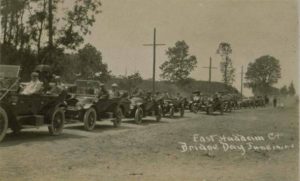
East Haddam Swing Bridge – Today in History: June 14
On June 14, 1913, the East Haddam Swing Bridge officially opened on Flag Day.
Read
Thomas Hall’s Electric Block Railroad Signal – Today in History: June 7
On June 7, 1870, Thomas Hall patented the electromagnetic signal apparatus for railroads–better known as the automatic electric block.
Read
Collis P. Huntington: The Boy from Poverty Hollow
From a poverty-stricken life in Harwinton, Connecticut, Collis Huntington grew to be one of the wealthiest and most powerful railroad men of his era.
Read
Steaming Across the Atlantic
New London’s advantageous location on Long Island Sound made it a center for innovation in the transportation of goods and services by sea.
Read
Learning about the Lusitania: How Hartford Heard the News
Citizens turned to outdoor bulletin boards, city bus drivers, and other lines of communication to get the latest news on the fate of the ship’s passengers.
Read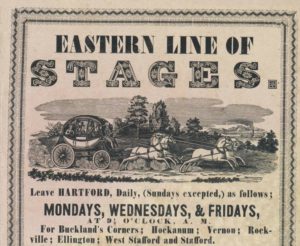
Stagecoach Sustained Commerce and Communication in 1800s
In its early 19th-century heyday, stagecoach travel was a large-scale enterprise and a source of livelihood for many state residents.
Read
Last State Highway Toll Paid – Today in History: April 28
On April 28, 1989, William Thornton paid the last state highway toll in Connecticut on the Charter Oak Bridge.
Read
Bradley International Airport Transforms Windsor Locks into Regional Gateway
Bradley International Airport in Windsor Locks is Connecticut’s largest airport and the second largest in New England.
Read
Steamboat Accident – Today in History: March 29
On March 29, 1876, the steamboat City of Hartford hit the Air Line Railroad Bridge on the Connecticut River at Middletown.
Read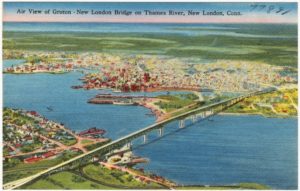
I-95 Reaches New London
The arrival of I-95 to New London brought tremendous change to the city’s infrastructure, as well as to its businesses and neighborhoods.
Read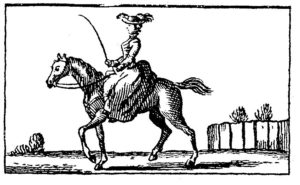
Sarah Kemble Knight’s Journey through Colonial Connecticut
In 1704, when long distance travel was rare and roads crude, a Boston woman journeyed by horseback to New York City and recorded her views of Connecticut along the way.
Read
The Gildersleeve Shipbuilding Legacy in Portland
Perhaps the most recognizable name in the history of Portland, Connecticut shipbuilding is Sylvester Gildersleeve.
Read
DN-1: The US Navy’s First Airship
The United States military’s experience with lighter-than-air technology began with the Connecticut Aircraft Company’s DN-1 airship built for the navy in 1917.
Read
New London’s Ferries: A Transportation Tradition
For more than three centuries, ferry service has provided vital transportation to residents and businesses around New London.
Read
Pierre Lallement and the Modern-Day Pedal Bicycle – Today in History: November 20
On November 20, 1866, mechanic Pierre Lallement, a temporary resident of New Haven, Connecticut, received a patent for an improvement in velocipedes.
Read
Helicopters, Guitars, and Guide Dogs: The Revolutionary Mind of Charles Kaman
Charles Kaman, an inventor and aviation pioneer, managed to combine all of his passions in life into successful business ventures.
Read
The Temperance Movement in Connecticut – Today in History: October 27
On October 27, 1841, the steamboat Greenfield traveled down the Connecticut River, transporting people to the Temperance Convention in Middletown.
Read
Oxford: From Paths to Pikes
When colonists first settled around Oxford, Connecticut, roads consisted of little more than footpaths, but farmers began demanding better roads.
Read
Benjamin Wright: The Father of American Civil Engineering
Benjamin Wright helped build transportation and canal systems in the United States and served as the chief engineer on the construction of the Erie Canal.
Read
The Steamboat New England: “The shock was dreadful” – Today in History: October 8
One of Connecticut’s worst steamboat disasters occurred on the dark and stormy night of October 8, 1833, on the Connecticut River.
Read
The Great River: Connecticut’s Main Stream
Highway. Barrier. Resource. Sewer. Over the centuries each of these names has been used to describe one of the defining feature’s of the state’s landscape.
Read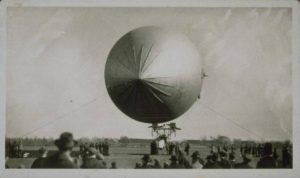
Airborne Pioneers: Connecticut Takes Flight
Daring flights and first-of-a-kind inventions mark the state’s 200-plus-year history of taking to the skies.
Read
The Sand Hogs Set the Foundation for the Bulkeley Bridge
Toiling in dangerous conditions beneath the Connecticut River’s surface for only $2.50 a day, African American workers dug the foundation for the Bulkeley Bridge.
Read
Steam Railroads Transform Connecticut Travel and Commerce
In 1832, the state chartered its first railroad and ushered in a new age of fast, and sometimes dangerous, regional transportation.
Read
Levi Pease, Stage Route and Transportation Innovator
Somers, Connecticut, a small town near the state’s border with Massachusetts, was the site of a revolution in 18th-century transportation.
Read
New England’s Grand Ambition: The Farmington Canal
Connecticut took leading role in waterway that transformed the region’s commerce.
Read
A Revolution On Two Wheels: Columbia Bicycles
Albert Pope’s company not only played a prominent role in developing improved bicycle designs, it also developed the market for them.
Read
Flying High with Early Dirigible
In what would later be described as “the first flight of a man-carrying dirigible in America,” aeronaut Mark Quinlan piloted a machine designed and patented by Charles F. Ritchel.
Read
“Something to Show for Our Work”: Building Brainard Airport
At the height of the Great Depression, unemployed men living around Hartford, became a cheap source of labor to help build Brainard airport.
Read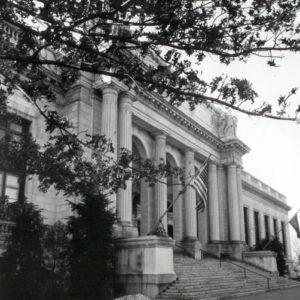
Parking Authority Created in New Haven – Today in History: June 2
On June 2, 1953, the Connecticut Supreme Court of Errors ruled that creating a parking authority in the city of New Haven was constitutional.
Read
Setting Speed Limits – Today in History: May 21
On May 21, 1901, Connecticut passed An Act Regulating the Speed of Motor Vehicles.
Read
The Comstock Bridge Brings East Hampton Residents Together
Over the Salmon River, the Comstock Bridge served as part of the main road between Colchester and Middletown for much of its existence.
Read
West Cornwall Covered Bridge: An Icon of New England Craftsmanship
The West Cornwall Covered Bridge is listed on the National Register of Historic places and has been a symbol of the area’s rural heritage for almost 150 years.
Read
Misread Signal Leads to Deadly South Norwalk Train Wreck – Who Knew?
By 1853, the era of steamboat transportation had largely given way to trains, but there was still a need to manage drawbridges for safe passage.
Read
Borough of Stonington
Settled in 1752, Stonington became a fishing, shipbuilding, whaling, and sealing center and survived attacks during both the Revolutionary War and the War of 1812.
Read
Hamilton Wrecks Aeroplane – Today in History: April 22
On April 22, 1911, aviation pioneer Charles Hamilton crashed his brand new, all white, biplane the “Moth” at Andrews Field in New Britain.
Read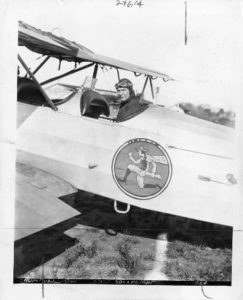
John H. Trumbull: Connecticut’s “Flying Governor”
In 1926, at the age of 53, Connecticut governor John H. Trumbull received his pilot’s license. Piloting flights to his own appointments, he became known as “The Flying Governor.”
Read
The Interstate Highway System Comes to Hartford
The building of I-84 and I-91 may have increased interstate transportation, but city planners and special interest groups continue to grapple with the legacy of these projects.
Read
John Fitch Born – Today in History: January 21
On January 21, 1743, John Fitch, an inventor and pioneer in steamboat construction, was born in Windsor–a settlement in the British colony of Connecticut.
Read
The Tariffville Disaster – Today in History: January 15
On January 14, 1878, at about 10:00 p.m., a span of the Tariffville Bridge gave way, plunging a Connecticut Western Railroad train into the Farmington River.
Read
Iron and Water: The Norwich & Worcester Railroad Story
Connecticut’s early railroad history had at its core the goal of linking New York City and Boston through a hybrid system of steamboats and trains.
Read
Igor Sikorsky and his Flying Machines
This Russian émigré not only invented a machine capable of controlled vertical flight, he also re-invented his aviation career along the way.
Read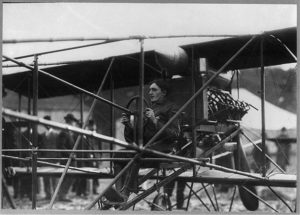
Hamilton Breaks Air Records – Today in History: June 13
Charles Keeney Hamilton completed the first round-trip journey ever made between two large cities in an airplane in the United States.
Read
An Orderly & Decent Government: Searching for the Common Good, 1819-1865
During the early 19th century, the General Assembly was slow to deal with rising crime, poverty and the other social costs of a rapidly changing society.
Read
An Orderly & Decent Government: Searching for the Common Good, 1776-1818
During the American Revolution, loyalists were common in Connecticut. Those sympathetic to the patriot cause helped provide for the Continental army.
Read
An Orderly & Decent Government: Searching for the Common Good, 1929-1964
Organized labor grew strong during wartime while discriminatory practices in housing and education persisted throughout the state.
Read
Silas Brooks, Balloonist
This Connecticut native, Silas Brooks, earned fame as a crowd-pleasing musician, showman, and aeronaut.
Read
Farmington Canal’s Ground-Breaking – Today in History: July 4
On July 4, 1825, the ground-breaking ceremonies for the Farmington Canal took place at Salmon Brook village in Granby.
Read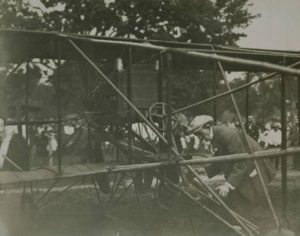
Looking Back: the First “Aero Planes”
New flying machines drew excited crowds to the 1911 opening of a new bridge between Saybrook and Old Lyme.
Read
Combined Rail-and-Water System Makes Norwich a Key Travel Hub in Mid-1800s
For waterfront towns like Norwich, early steamships offered opportunities for travel and commerce previously unthinkable to generations of local residents.
Read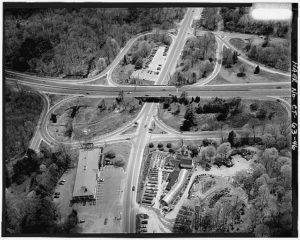
Overland Travel in Connecticut, from Footpaths to Interstates
By overcoming the limitation of distance, transportation makes possible the many economic and social interactions that allow a community, a people, an entire culture, to thrive
Read
Lisbon Tunnel Completed – Today in History: August 28
The Norwich and Worcester Railroad built the first railroad tunnel in Connecticut, and one of the first in the nation, in the town of Lisbon in the 1830s.
Read
Horror on the Housatonic: The Railroad Disaster of August 1865
Despite measures to ensure the safe operation of railroad trains traveling in opposite directions on single-track lines, things sometimes went wrong—with deadly results.
Read
The Lemon Law – Today in History: June 4
On June 4, 1982, Connecticut made legislative history by pioneering the country’s first Lemon Law.
Read
A Shipping and Railroad Magnate Remembers His Connecticut Roots
From Connecticut, Charles Morgan was a shipping and railroad magnate who became one of the most esteemed New York millionaires of the 19th century.
Read
Hidden Nearby: Jedediah Strong’s Milestone
The Litchfield man behind this colonial-era mile marker led an accomplished but, ultimately, tragic life.
Read
Armstrong Finds a Niche in the Tire Market
Armstrong tires, one of the most popular brands of automobile and farm equipment tires in the 20th century, has its roots in West Haven, Connecticut.
Read
The League of American Wheelmen and Hartford’s Albert Pope Champion the Good Roads Movement
How the 19th-century cycling craze led to improved roads and paved the way for future federal highway construction.
Read
North Stonington: Shunock River and Local Ambitions Powered a 19th-century Mill Town
With water supplied by the Shunock River and Assekonk Brook, North Stonington supported mill operations and local businesses from the late 1600s to early 1900s.
Read
Windsor Engineers Success
In recognition of the importance of the canal and the village in fostering local economic development, the area was given the name Windsor Locks in 1854.
Read
Mystic River Bridge Opens – Today in History: July 19
On July 19, 1922, the Mystic River Bridge spanning the Mystic River in Groton opened to the public.
Read
Branford Gets On the Trolley
Starting as a means of intra-city transportation, trolley lines extended outward by the start of the 20th century and promoted the growth of modern suburbs.
ReadMore Articles




